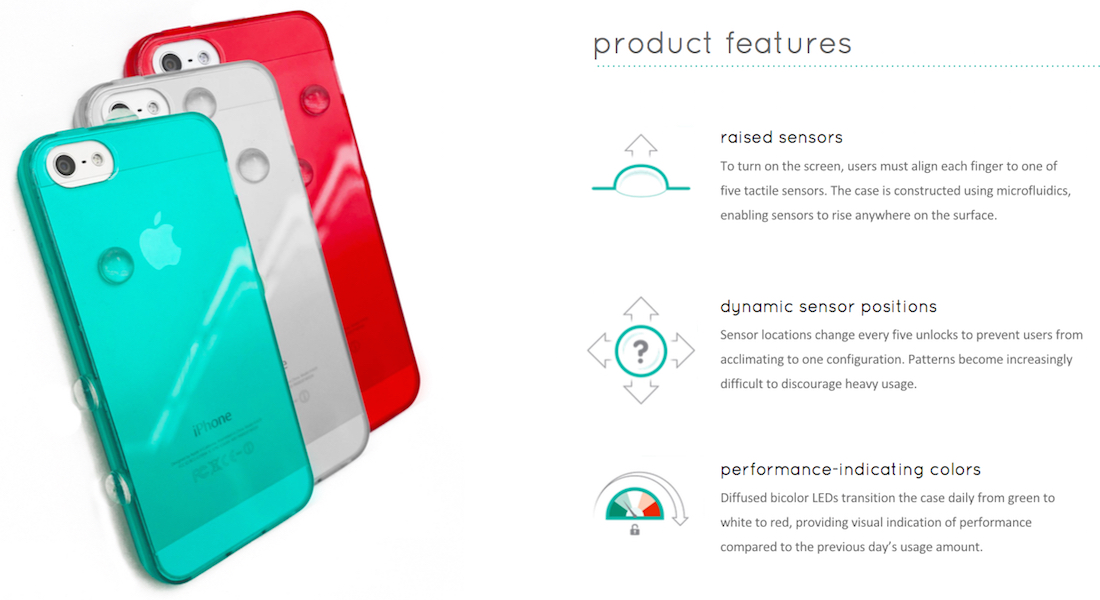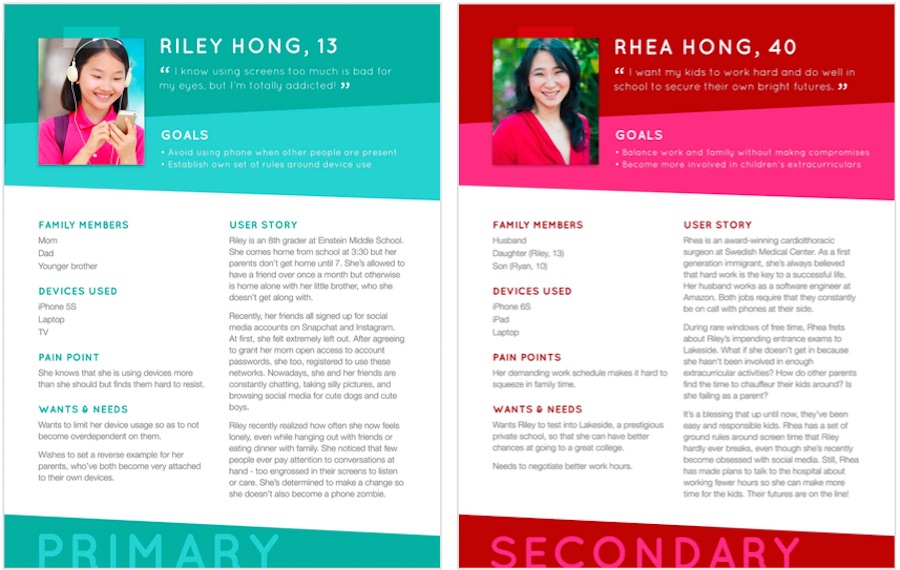screen(Less)
Sep 2015 - Mar 2016
Project Overview

screen(Less) is a performative phone case with raised microfluidic pressure sensors that need to be pressed at the same time to unlock the phone. The unlock pattern gets increasingly awkward and the case color changes as users approach a certain number of unlocks in a day.
This began as an open-ended exploration of the “Internet of Things”, as prescribed by our sponsor HTC. We went through the majority of the UX cycle, stopping at real production and testing as our concept used a technology we could not acquire.
My role
Leader, Designer, Moderator
I took on a leadership role in my group, and contributed to the organization and timeliness of our Capstone plan and execution. While all of us took part in the secondary research, ideation, and design, I was able to uniquely utilize my independent research from a previous quarter on the landscape of children’s wearables and interaction with technology. I also led the second focus group, interacting directly with the children and managing them throughout the afternoon.
For the final deliverables, I wrote much of the final paper and edited everyone’s contributions for a single, cohesive voice.
Process

- September through December: secondary research into IoT, meet with stakeholders, design full Capstone research plan
- January: finalize secondary research, find participants, design focus group sessions and materials
- February: conduct focus group sessions, capture and synthesize data, create personas, brainstorm design solution
- March: create prototype, concept test prototype, prepare presentation/showcase materials, present to HCDE cohort and teachers
- April: present to HTC
Challenges
Blue sky prototyping: Our design featured a relatively new material that is still being researched and experimented with. This meant that we were unable to create a real prototype to test with. Instead, we created three “wizard-of-oz” prototypes that showcased the sensors at differing levels of sensor awkwardness. While this didn’t provide the full experience, it was enough proof-of-concept for our final focus group to understand the design and provide feedback.
Direction: HTC provided a very abstract prompt for us to design. On the one hand, it was great to be able to research what we wanted and how we wanted. On the other hand, it took us a few weeks to really find our groove and focus. We knew we wanted to create a physical design, and focus on children/teens as our audience. From there, we went through several rounds of affinity diagramming, brainstorm, and lots of reading to lead us to reducing mindless phone usage.
Participant bias: We sourced all of our focus group participants through convenience sampling (children of friends, friends-of-friends, etc.) as that was the easiest way to access a vulnerable group. This provided us two very different focus groups with different needs, but this sample is not comprehensive. Under the time constraint, we were unable to conduct more research with greater variety so we acknowledged the bias in our findings and designed for a specific type of persona.
Toolkit

- Competitive analysis
- Focus groups
- Digital survey
- UX design and prototyping
- Personas